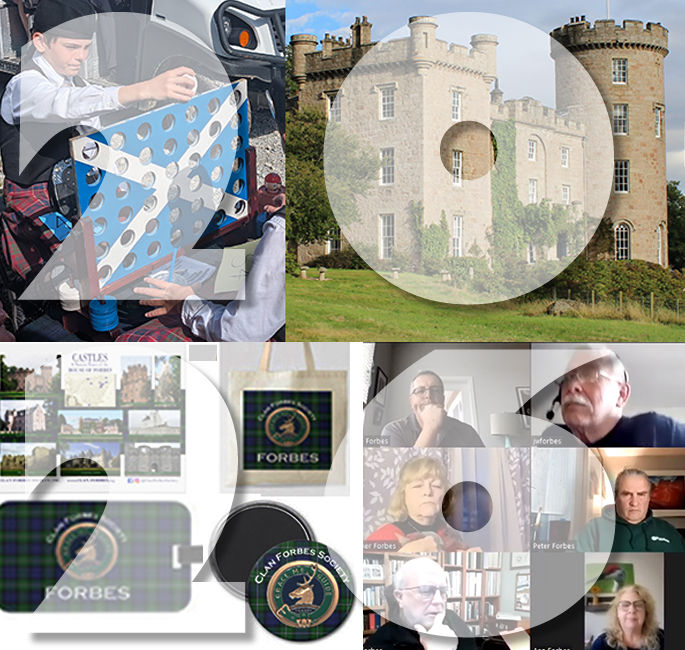Forbes and the Pilgrims
- Bart Forbes

- Nov 23, 2020
- 3 min read
Updated: Apr 15, 2025
The son of an outspoken critic of the Church of England who fled to Holland, John Forbes (1608 – 1661) followed the Pilgrims to the Plymouth Colony as an indentured tradesman, acquired land and a minor position, and was the progenitor of generations of Forbes in Bridgewater, Massachusetts.
In 1603, James VI of Scotland ascended to the English crown in 1603 as James I of England and Scotland. The countries were embroiled in religious upheaval between the strict adherents of John Calvin (1509 –1564) and other Protestants. The “pure” Calvinist believers or “Puritans” maintained that their congregations needed to be separated from the English state church. Starting in about 1607, many Puritans moved to Leyden, Holland, to create their own religious community.

Among them was the Reverend John Forbes (1568 – 1634), brother of Patrick Forbes (1635 – 1635), 5th Laird of Corse and Bishop of Aberdeen. In 1605, he was appointed moderator of the Aberdeen assembly, which was held contrary to the King's orders. When he was summoned before the privy council, he declined its jurisdiction due its spiritual nature. A jury found him guilty for high treason and James I banished him to Holland.
In 1608, his son John was born in Leyden, South Holland, United Netherlands Republic. With the other children of the congregation, young John began adopting the Dutch language and customs. After an attempt by the English government to silence their criticism of the Anglican Church and the King, the congregation decided to settle in the colonies. Rather than continuing the Dutch influence in New Amsterdam, they chose to obtain a land grant from Plymouth Company, an English joint-stock company founded in 1606 to establish settlements on the coast of North America.

Starting in 1620 with the Mayflower, several ships sailed from England and Holland with members of the Puritans seeking the relief from religious persecution. In 1629, then 19-year-old John Forbes likely joined them on the Talbot, one of Isaac Allerton’s ships that sailed from England 24 April 1629 as part of the Higginson Fleet. To pay for his passage, Forbes became indentured to tailor and merchant Isaac Allerton, who had arrived on the Mayflower and had become one of the wealthiest colonists of the time.
As an indentured servant, John Forbes would not be listed on any passenger manifest or any other document. In fact, he is only mentioned after his required 7 years and was granted the usual 25 acres and 12 bushels of corn.
Forbes was fluent in the Dutch language, in which the letters “V” and “F” were pronounced similarly. When Forbes arrived in the Plymouth Colony, clerks transcribed his name as they heard it: “Fobes” or “Vobes.” Not until the early 19th century when descendants wrote or signed their own names did the spelling “Forbes” start to re-emerge. However, some descendants have maintained the early American spelling “Fobes” until today.
In October 5, 1636, no less than William Bradford, the longest-serving governor of Plymouth, filed charges of trespassing against John Forbes, William Merick, George Partridge, and Richard Clough. The jury found them guilty and fined them 5 pounds sterling and court costs. However, on the very day, the town granted him land in the new settlement of “Duxborough” (later Duxbury) and acquired an additional 20 acres at Green Harbor in 1637.
In 1637, Fobes married Constant Mitchell (1614 - 1690?) , the daughter of Thomas Mitchell and Margaret Vochin. Both Constant and her brother Experience were born in Leiden, Zuid-Holland, Netherlands, and arrived at the Plymouth aboard the ship Ann in 1623. The couple had seven children: Mary (1645 - ?), John (1646 – 1661), Joshua (1647 - 1676), William (1649 – 1712), Edward (1651 – 1732), Caleb (1653 – 1710), and Elizabeth (1657 – 1739).

Other documents indicate that he was awarded the privilege to bear arms in 1643 and “propounded as a freeman” (terminated his indenture obligation) on March 3, 1645. In 1645, Forbes became one of the 54 original proprietors or founders of the “Bridgewaters” (Bridgewater), then still a part of Duxbury. The other men granted land included Bradford himself, the redoubtable Miles Standish, and Experience Mitchell, the brother-in-law of Forbes.
He later acquired a small tract of land at Powder Point in 1649. In 1651, Forbes was appointed constable of Duxbury and in 1658 to 1659 served on a committee investigating a drowning and compensating the Indians for their assistance.
As a result of religious persecution in Scotland, John Forbes established an American Forbes legacy that today includes over 180 people named “Fobes” and “Forbes” in the Massachusetts, Rhode Island, and Connecticut area alone.




Comments